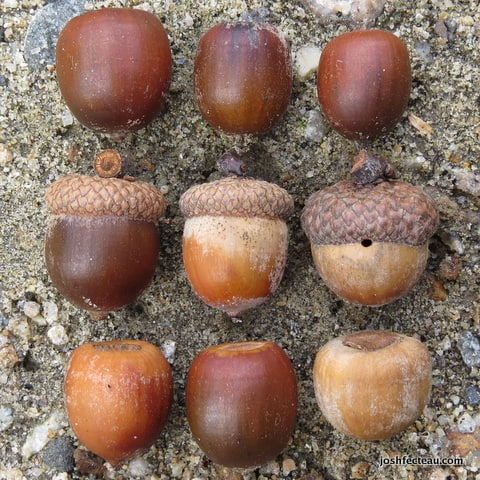Although not ‘animals’ like our title indicates, we chose to focus on oak trees in this newsletter because I was beaned on the head with an acorn the other day! Ouch!
 We are blessed with many oak trees on our property, and they are abundant along Birchview Road. There are 600 species of oak worldwide and 11 are native to Ontario. Generally, oak trees can be identified by their distinctive lobed leaves – for example, white oak usually have rounded tips while red oak generally have pointed tips. The wood of oaks is strong, hard, and dense with a very close grain and prized by woodworkers. The trees are resistant to insect and fungus infections.
We are blessed with many oak trees on our property, and they are abundant along Birchview Road. There are 600 species of oak worldwide and 11 are native to Ontario. Generally, oak trees can be identified by their distinctive lobed leaves – for example, white oak usually have rounded tips while red oak generally have pointed tips. The wood of oaks is strong, hard, and dense with a very close grain and prized by woodworkers. The trees are resistant to insect and fungus infections.
The offspring of the oak plays an important role in the ecology of a forest. For many animals, acorns are an important part of their diets — birds like jays and pigeons, mammals like mice and squirrels, even deer. The acorns can be eaten or stored and are popular because they are rich in proteins, carbs and fats as well as minerals like calcium and potassium.
Many animals will eat unripe acorns on the tree and ripe acorns from the ground. Some animals such as jays are considered ‘seed dispersal agents’, meaning they scatter their acorns for future use in a variety of locations. Those acorns may not all be retrieved, so the acorns may germinate and grow into the beautiful oaks that grace so many forests.
Even though we had a violent introduction, I picked up that acorn that hit me and made sure it found a place where it can grow. I’m hopeful campers in 100 years will see the oak tree whose acorn I met in 2021.


